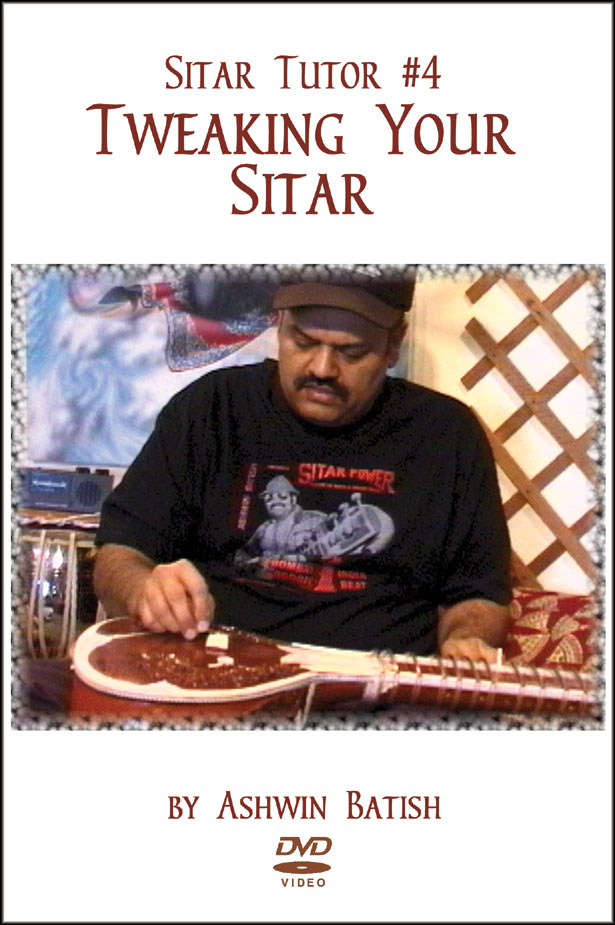Pandit Shiv Dayal Batish
Raga Manavati
Ashwin Batish and family Live
The UC Theater, Berkeley, California.
Meena Batish
Words by Ghalib
Music by S.D. Batish
Phone: (831) 423-1699

Question & Answers about your Sitar's Jawariby Ashwin Batish |

levi23 wrote: Greetings. I've recently acquired a sitar which needs reconditioning (the Hindi name for the treatment-- starts with "jawa...."-- escapes me as I'm new to all of this)...... The term you are referring to is "Jawāri". (It is crucial this be ground correctly in order to give it a clear sound and good sustain especially for gamak purposes. The best tool to use for this is a file (medium gauge). Don't use sandpaper as this will tend to grind it unevenly. Some "Jawāri" openers will use razor blades. Caution is advised as this also has a tendency to grind unevenly. It can be used for the final touch up. There are two main styles common to Jawāri, Khullā (open) and Bandha (closed). Ravi Shankar's sitār would be a good example of the "open" sounding Jawāri. Nikhil Banerji's sitār sound would give you a good example of how a "closed" Jawāri sounds.
followup question..... Shantigram Venkatesh Jagannath wrote: What exactly does the word "jawari" mean and refer to? Is it the bridge on which the strings sit? Or is it the act of filing down the bridge to eliminate the grooves which suppress the sound of the sitār? "Jawāri" is the process of optimizing the tonal quality of an instrument such as sitār, tanpurā, veenā. I have even heard it being applied to tablās where a thread is inserted under the chānti portion to raise the skin and hence add more resonance to the drum. On a tānpurā, the Jāwari is opened by inserting a thread under each string on the bridge and sliding it until a noticeable increase in the vibration of the string becomes evident. The thread literally raises the string such that it vibrates upon the bridge. The bridge is called "Ghodi" (Ghodā means horse). The act of filing the "Ghodi" is a part of the "Jawāri" optimization process. What is the difference between "khullā" and "bandh" jawāri? "Khullā" means open. Hence the timbre of the instrument is vibrant, bright and resonant. The string has a raised front half to create this tone. "Bandha" means closed. Jawāri gurus will usually lay the string with full contact with the bone surface to produce this type of tone. It has a dull sound but produces more sustain and triggers the sympathetic string more effectively How frequently should we have the jawāri "fixed"? That depends on the condition of the surface. You are correct in your summation that the grooves on the bridge hinder resonance. Usually when these get deep, a tinny sound timbre is noticeable. This is a good time to fix it. The Khullā Jawāris develop this problem quicker than the Bandha type. Hope this is of help. This answer will also be posted on our RagaNet electronic magazine pages. Batish Institute of Indian Music and Fine Arts 1310 Mission Street, Santa Cruz, CA 95060. U.S.A. Voice: (831) 423-1699 / Fax: (831) 423-5172 Issues:1 • 2 • 3 • 4 • 5 • 6 • 7 • 8 • 9
|
|
|
|
email: info [at] batish.com
copyright ©1995 - Present Time ---- Batish Institute. All rights reserved. Intended For Personal Use Only. No part of the information here may be reproduced or utilized in any form or by any means, electronic or mechanical, including photocopying and recording, or by any information and storage retrieval system, without specific written permission from the Batish family.